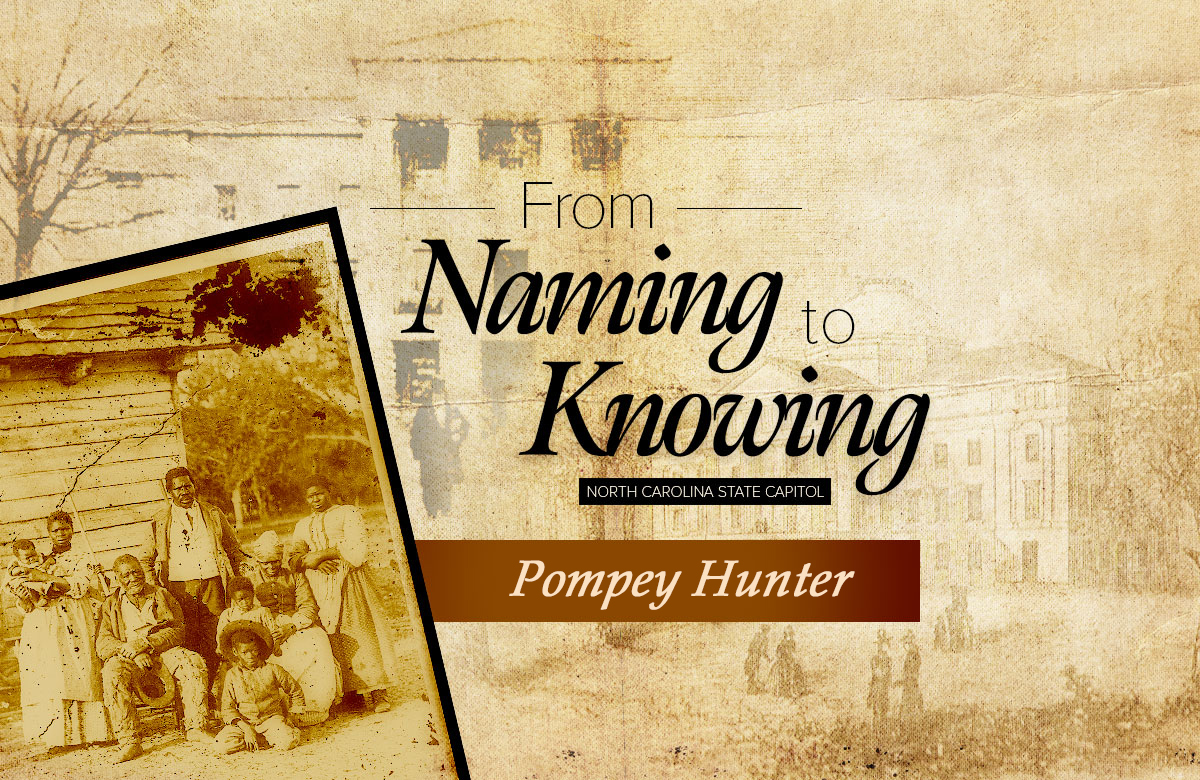Though very little is currently known about Phill’s life, he worked at the Capitol as a laborer and may have worked in the grocery store of his enslaver.
A receipt from 1834 noted that an enslaved man named Jerry Bennehan had hauled an anvil and bellows from Fayetteville to the Capitol. Jerry was enslaved at Stagville, a plantation in central North Carolina about a day's ride from the Capitol.
Retracing the lives of enslaved people is a difficult process, as those updating written records were primarily White people and often enslavers. At time, historical documents refer to enslaved laborers at the Capitol but do not record names - we recognize and remember those individuals with "Unnamed."
After Emancipation, Pompey Hunter relocated from Wake County to Bibb County, Georgia. He lived there with his wife and family, working as a gardener.
Andrew Whitaker was a laborer during the Capitol's construction. His enslaver operated a piano shop, where Andrew may have worked.
Alfred Wheaton was born around 1807. After Emancipation, Alfred was a trustee of Manly Street Christian Church.
Giles Stone was born on October 9th, 1815. His enslaver Sarah Stone listed his birthday on an 1819 list found in her journal. When he began working at the Capitol, he was about 18 years old.
Glasgow Saunders was highly paid for this project; his labor was valued at $1.00 per day, double what the labor of most of the enslaved men generated.
It is likely that Ned was born around 1802. Ned worked during the Capitol's construction as a “quarryman.” Ned is mentioned multiple times in the will of his enslaver.
Cabinetmaker Handy Lockhart helped craft more than 170 pieces of furniture, namely desks, chairs, and tables, for use in the House and Senate Chambers. He was a well-connected, politically active man of faith in the years after he gained his freedom.
- 1
- 2













